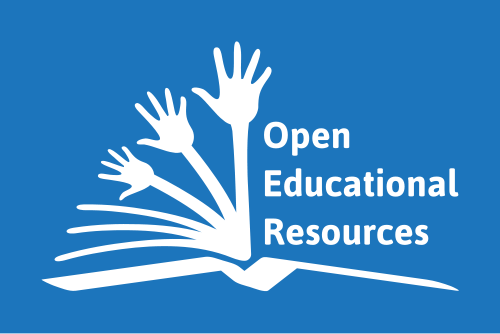Open Education in the Higher Education context is the philosophy of sharing freely and openly for use in learning, teaching, and research. The manifestation of this philosophy is generally known as Open Educational Practice (OEP). It is the embedding of the use, production and sharing of open content into practice. Through OEP improvements may be made in the production of educational resources, including their quality and the subject matter covered. The crucial point is in adaptation and improvement, not just making resources available.
There are “4R” elements to open.
- Reuse: the right to reuse the content in its unaltered/verbatim form
- Revise: the right to adapt, adjust, modify, or alter the content itself (e.g. translate into another language)
- Remix: the right to combine the original or revised content with other content to create something new (e.g. make a mashup of content)
- Redistribute: the right to share copies of the original content, the revisions, or the remixes with others.
There are various aspects to the open movement concept. These include:
- Open Source, which covers opening up computer software code
- Open Science, including Citizen Science
- Open Data, very important in the next few years
- Open Access, availability of published research output
- Open Teaching
- Open Assessment, including Open Badges
- Open Content
- Open Policy
Primarily I want to start by covering Open Educational Resources (OERs).
At the heart of the movement towards open educational resources is the simple and powerful idea that the world’s knowledge is a public good and that technology in general, and the WorldWide Web in particular provide an extraordinary opportunity for everyone to share, use and re-use it.
Marshall S. Smith & Catherine M. Casserly, Hewlett Foundation
A pre-release version of an article published by Change Magazine in the Fall 2006.
This work is licensed under the Creative Commons Attribution 2.5 License http://creativecommons.org/licenses/by/2.5/
(Accessed 17 December 2013)
For each area of openness there can be several subsets. For OERs these include, but are not limited to, OpenCourseware (OCW), Open Textbooks, and depending on their implementation, Massive Open Online Courses (MOOCs).
[Aside:
At this point I need to just clarify what is meant by free and open as there can be confusion.
Gratis versus Libre is the distinction between two meanings, "for zero price" (gratis) and "with little or no restriction" (libre). This ambiguity can cause issues where the distinction is important, as it often is when dealing with laws concerning the use of information, such as copyright and patents.
The terms are largely used to categorise intellectual property, particularly computer programs, according to the licences and legal restrictions that cover them, in the free software and open source communities, as well as the broader free culture movement. For example, they are used to distinguish freeware (gratis) from free and open software (libre).
adapted from
(Accessed 17 December 2013)
Both potentially have their place in education. But the inherent limitations in gratis should be recognised. From now on the Libre version of Open is used.]
OERs Definition
 |
Global Open Educational Resources Logo By Jonathasmello (Own work)
|
There are a few definitions for Open Educational Resources. The following are some of them. As the term originated from a 2002 UNESCO conference it seems appropriate to begin with their definition.
UNESCO
Open Educational Resources (OERs) are any type of educational materials that are in the public domain or introduced with an open license. The nature of these open materials means that anyone can legally and freely copy, use, adapt and re-share them. OERs range from textbooks to curricula, syllabi, lecture notes, assignments, tests, projects, audio, video and animation.
(Accessed 17 December 2013)
Hewlett Foundation
OER are teaching, learning, and research resources that reside in the public domain or have been released under an intellectual property license that permits their free use and re-purposing by others. Open educational resources include full courses, course materials, modules, textbooks, streaming videos, tests, software, and any other tools, materials, or techniques used to support access to knowledge.
(Accessed 17 December 2013)
OER Commons
Open Educational Resources (OER) are teaching and learning materials that are freely available online for anyone to use, whether you are an instructor, student, or self-learner. OER can exist as smaller, stand-alone resources that can be mixed and combined to form larger pieces of content, or as larger course modules or full courses.
OER is also a process of engaging with the materials. This process involves sharing materials that you have created, either individually or in groups with other teachers and/or learners; using and adapting others’ materials for your own use; and sharing back modifications to or comments about others’ materials so that future users can benefit.
(Accessed 17 December 2013)
Commonly used definition
Open Educational Resources may be described as freely available digital materials released under open licence that can be used and re-purposed for teaching, learning, and research.
Educators, learners, and the general public can access and make use of open educational resources, irrespective of their location or affiliation with any particular institution.
So there are two aspects to OERs. The first is finding and using content created by others. And the other is creating and sharing your own material, which might include adapted content from others. I will be expanding on OERs in future posts.










No comments:
Post a Comment